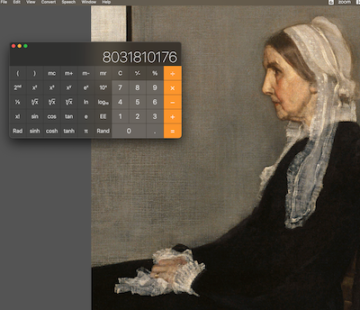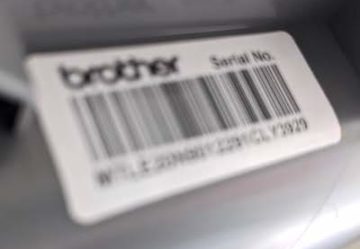by Richard Farr
 Lucky you, reading this on a screen, in a warm and well-lit room, somewhere in the unparalleled comfort of the twenty-first century. But imagine instead that it’s 800 C.E., and you’re a monk at one of the great pre-modern monasteries — Clonard Abbey in Ireland, perhaps. There’s a silver lining: unlike most people, you can read. On the other hand, you’re looking at another long day in a bitterly cold scriptorium. Your cassock is a city of fleas. You’re reading this on parchment, which stinks because it’s a piece of crudely scraped animal skin, by the light of a candle, which stinks because it’s a fountain of burnt animal fat particles. And your morning mug of joe won’t appear at your elbow for a thousand years.
Lucky you, reading this on a screen, in a warm and well-lit room, somewhere in the unparalleled comfort of the twenty-first century. But imagine instead that it’s 800 C.E., and you’re a monk at one of the great pre-modern monasteries — Clonard Abbey in Ireland, perhaps. There’s a silver lining: unlike most people, you can read. On the other hand, you’re looking at another long day in a bitterly cold scriptorium. Your cassock is a city of fleas. You’re reading this on parchment, which stinks because it’s a piece of crudely scraped animal skin, by the light of a candle, which stinks because it’s a fountain of burnt animal fat particles. And your morning mug of joe won’t appear at your elbow for a thousand years.
What could be worse than the cold, the fleas, the stink, and no coffee? Well. The script you are reading is minuscule, to save ink and space, and it’s written in scriptio continua. That’s right: you are plagued by headaches because spacesbetweenthewordsaremodernconveniencesthathavelikepunctuationandcoffeeandreadingglassesanddeodorantforthatmatternotyetbeeninvented. Even for someone like you, with years of prayer and special training under your greasy rope belt, this is a constant source of difficultyambiguityfrustrationeyestrainanderrer.
Thank goodness for modernity, eh? Except for one strange fact. In our smugly “digital” age, our numbers are still waiting for modernity to happen.
My ‘tax return submission ID number’ is not so much a number as a joke, an absurdity, a piece of alphanumeric theater that belongs in a farce about bureaucracy by the Italian anarchist Dario Fo: 3456782023176u9xzjtp. (OK, I made that up. You get the picture. Extra credit for noticing the Julian date peering out shyly from the weeds, or for even knowing what a Julian date is.) You might think: do they want to track, like, every living human being? Actually, according to my quick back-of-the-envelope, this is easily enough real estate with which to issue a distinct return for every single second of every single human life, ever, all the way back to the Pleistocene.
 Not to be outdone, the serial number on my dead toner cartridge – which I had to type into a box in order to get the return/recycling label — is (I think; I’m not all that confident) MTLE29N9012291CLY3929. Twenty-one elements — take that, feeble IRS. Assuming we can permit ourselves either a number or an uppercase letter in each position, we have the potential to uniquely identify not millions of individual toner cartridges, or billions or trillions, but (take a deep breath) hundreds of millions of trillions of trillions. That’s a stack of gray plastic bricks so literally astronomical that we could use it to rebuild the solar system.
Not to be outdone, the serial number on my dead toner cartridge – which I had to type into a box in order to get the return/recycling label — is (I think; I’m not all that confident) MTLE29N9012291CLY3929. Twenty-one elements — take that, feeble IRS. Assuming we can permit ourselves either a number or an uppercase letter in each position, we have the potential to uniquely identify not millions of individual toner cartridges, or billions or trillions, but (take a deep breath) hundreds of millions of trillions of trillions. That’s a stack of gray plastic bricks so literally astronomical that we could use it to rebuild the solar system.
(You owe this fun fact to my giving up on the envelope and opening the calculator widget on my desktop. Marvelous device! While I was pecking at it, entering this-to-the-power-of-that, one result it gave me was 8031810176. Another was 1028071702528. A third, perhaps even more witty and piquant, was 100000000000000. In order to translate these computational oracles into my own mental language I found that a useful piece of equipment was a coffee mug with a straight side, which I held at arm’s length and moved right to left across the screen. Three is thousand, six is million, nine is tri, no, billion. Or was that only eight digits? I’ll start again.)
The network key on my router is a mere sixteen unspaced elements. But it’s on the bottom of the router, in a font less than a millimeter tall, so I had to pay an ant to read it out to me. Even the ant complained: as if in a deliberate but failed attempt at comedy, the manufacturer printed it on a shiny silver sticker that would make it almost impossible to read in any light, at any size.
Don’t get me started on my car’s VIN, a seventeen-element string that I recently had to copy out onto a sodden scrap of paper while standing in the rain. It employs a different technique — being buried in a narrow recess under the light reflecting off the windshield — to be about equally unreadable.
By comparison, my passport number is a model of restraint. Eight digits should have been enough, but nine is nice because it keeps us covered in case the total number of US citizens who want to go to Rome and jump naked into the Trevi fountain approaches a billion. But it’s printed in a font three millimeters high in the middle of a cool white bath of space that would easily accommodate text four times larger. And, like all these numbers, it could have been printed in groups of three digits — but instead we get 210006647. Scriptio continua.
Would grouped passport digits, in a bigger font, make life easier for tens of millions of travelers? You can test this arcane theory yourself by acquiring a half-eaten sandwich, four shoulder bags, a sticky toddler with earache, a TSA security line with a broken scanner, skull-crushing jet lag, a small crumpled Customs Declaration, and a borrowed ballpoint that leaks. Now lean way forward until your head is upside down, balance your passport on one thigh, and decide which format your overtaxed human cognitive equipment prefers:
210006647
210 006 647
Not that I wish to disparage human cognitive equipment. Like most people, I arrived on this planet with two miraculous, jellylike photon detectors installed in the front of my head. They can identify any light with a wavelength in the 400-700 nanometer range. The ability to access that wafer-thin slice of the electromagnetic spectrum is enough to reveal wonders: this text, for instance, and sunsets, and the shockingly beautiful green photon detectors installed in my wife.
Unfortunately my own detectors were constructed in my mother’s Uterine NanoFab Facility more than six decades ago. Now all sorts of things are starting to go wrong with them. Yellowing of the lens. Weakening of the muscles. On account of God having a cruel sense of humor, both excessive dryness and excessive watering. Gray ‘floaters’ that look like a memory of bygone synchronized swim teams.
No doubt that’s partly why I’m complaining. But even people with young, 20/20 photon detectors have the same H. sap brain at the back of the store. And nothing more decisively refutes the favorite witless nostrum of most philosophers and nearly all neuroscientists — “your brain is a kind of computer” — than the brain’s radical, radical incompetence at the sole task computers perform well: the fast, accurate processing of long strings of symbols.
Here’s the good news. With scarcely any effort at all, we can make the world a better place for the human brain and eyeball. We only have to respect three simple rules:
- Be ruthless about keeping numbers as short as their purpose permits.
- Display them in a font as big as the available space permits.
And, perhaps simplest and most important of all:
- Group the little bastards.
Putting spaces between words was an idea of genius. According to one theory, we have those Irish monks to thank. We should be grateful beyond measure: spacing made reading easier and therefore helped make general literacy possible. Given that we’re not much bothered these days by the cost of ink, or shortages of parchment, dontyouthinkthatperhapsitstimeatlonglastafterallthesecenturiesforournumbersalsotoleavethedarkagesbehind?
